Meat pH Meter PCE-PH20M easy-to-use pH meter for pH determination External pH electrode
Recalibratable / Waterproof (IP 67)
The pH meter was developed to directly determine the pH in food and meat. The waterproof pH tester is used for the fast and accurate measurement of pH. The practical display makes the pH value on the pH meter easy to read. Due to the waterproof and robust housing (IP 67), the pH value tester can also be used under difficult conditions. A recalibration always guarantees optimum accuracy and is very easy to perform using the optionally available calibration kits (automatic calibration function without calibration screws – to be performed only via the keyboard).
pH of meat products
The pH measurement in the foodstuffs production and processing is a ubiquitous method of measurement. It is needed in many downstream process steps and has a direct influence on the tactile, sensory and hygienic quality of the future foodstuffs.
Practical example: pH-control in the production of aspic and aspic sausage
In the production of aspic, besides the artisanal production of animal constituents (paws and rinds), there is also the use of industrially produced gelatin. It consists largely of similar animal ingredients but is produced industrially.
The so-called bloom number characterizes gelatin and defines the subsequent firmness of the aspic. Which means: the higher the bloom number is, the higher the firmness. 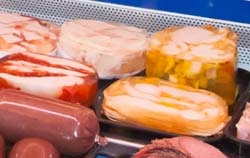 The reference values are the following: bloom numbers < 160 are defined as lower, the bloom numbers > 220 are defined as higher.
The reference values are the following: bloom numbers < 160 are defined as lower, the bloom numbers > 220 are defined as higher.
However, the other factors also play an equally important role in the firmness of the subsequent aspic.
– Amount of the added gelatin
– Bloom number
– Temperature of the finished jelly, as well as the heating and cooling process during the manufacture
– the pH value
In the production of aspic an edible gelatin is first swelled in cold water and then heated carefully at 50-60 ° C with stirring. During this process the gelatin dissolves. In case of aspic powder the swelling can be omitted and the water can be heated more (up to 80 °C). Spices and depending on the product different amounts of vinegar are added to this gelatin mass. In this case, the added amount of the vinegar influences the pH value of the gelatin mass.
Because of the hygienic reasons an acidic pH value is always an advantage; depending on the type of aspic also for the reasons of taste. However, the pH has a direct influence on the firmness of aspic. So the aspics with the pH range of pH 3-4 have got a 10-20% lower firmness than the aspics with the pH 5. In order to reach the desired aspic firmness in each product, depending on the used vinegar amount gelatin with an appropriate bloom number must be used. Also, the vinegar can be added to the aspic shortly before the end, in addition to the gelatin. In these cases, the gelatins with lower bloom number can be used then. Depending on the subsequent aspic the optimum “process conditions” regarding the type of gelatin, temperature (exposure time) can be found. The pH defines the characteristics and must be measured in the working process.
What are the requirements to metrology in aspic production?
Aspic or gelatin masses, depending on the production step, may be from viscous to gel-like and semisolid. In order to measure the pH in these samples, they need to be inserted into the product. Contrary to simple pH measurements in water the pH sensors with conical shape are required here.
Sensors. Depending on the firmness of the aspic the pH electrodes with integrated knife are advantageous.
pH meters should have an lighted and easy to read display. At the same time an automatic temperature measurement in the product is required. If the measurement of temperature and / or pH value processes (determination of exposure time) is desired, data recording is also an important option.
Practical example: pH measurement in fresh meat
To evaluate the product quality of meat, fish and by-products, it is important to determine the so-called quality parameters in the production and further processing.
These quality parameters characterize the foodstuffs in terms of their internal structure, processing quality, sensory characteristics and hygienic status. Depending on the quality parameters the properties of the foodstuffs must be measured objectively and comparably and evaluated. In particular, the physical chemical as well as microbiological characteristics are of paramount importance.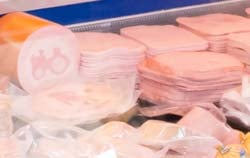
Within these control parameters, the pH value plays an important role. In the processing as well as during the storage of meat, the pH is measured to detect the meat quality defects.
After slaughter of an animal, the pH value is measured and evaluated after 60 minutes (pH1) as well as after 24 hours (pH24).
As border areas for assessment of the quality of meat the PSE meat and DFD meat ranges are to consider.
PSE�Pale (light), Soft (soft) and Exudative (aqueous); (pH1<5.8)
DFD Dark (dark), Firm (firm) and Dry (dry); (pH24> 6.2)
PSE meat is characterized by a poor juiciness, by an aqueous looks, poor water holding capacity and a soft consistency, as well as by a reduced meat flavor and is not suitable for cooking, cooked sausage and cooked ham.
DFD meat, in its turn, is characterized by a dark color, a bland taste, good water holding capacity and a limited shelf life (bacterial spoilage) and is not suitable for raw ham and sausages, as well as for mince.
Performance of a pH measurement
Measuring range: between pH 3 to pH 8
Meter: Food pH Meter PCE-228M
Experimental method: take a small amount of product in a sample cup. The amount of sample should allow a penetration for a depth of 3-4 cm.
Insert the pH electrode and temperature probe 3-4cm deep into the taken sample carefully. After about 30 seconds take a record of the pH reading rounded with 0.1 pH accuracy and the temperature. Measured value indication: pH x.x (y° C); e.g. pH 5.5 (10° C)
Cleaning of the pH sensor: A contamination of the pH sensor incl. diaphragm leads to long response times and unstable measurement values.
It should be noted that during each pH measurement series the immersed sensor tip must be rinsed immediately and thoroughly with distilled water. Adhesive product can be rinsed with lukewarm water. A fat-containing layer on the pH sensor and the diaphragm can be removed by a quick short-term rinsing with alcohol. It is recommended then to conduct a subsequent rinse of the pH electrode with distilled water and a test in a pH 4.01 calibration solution. After a measurement cycle (week) it is recommended to clean the pH sensor in a Pepsin cleaning solution in order to minimize the contamination of the diaphragm with proteins. In these cases, calibration is required after cleaning.
During the pH measurement, calibration and maintenance the following should be considered:
– The measuring probe must be free of debris,
– The pH sensor must not be affected mechanically.
– After cleaning, the electrode is kept in a storage solution (Storage-Solution).
PCE Instruments offers:
pH calibration solutions: PCE-PH47-x pH4,00 and pH 7.00 in the bottle sizes x = 250 and x = 500
Storage Solution:�PCE SSO 500 Storage solution for pH sensors
Cleaning solutions: HI 7073L cleaning solution on a pepsin basis
– Waterproof (IP 67)
– Special external measuring electrode on cable
– High accuracy
– Auto-power-off for battery saver
– Supplied with calibration solutions
– Data hold function
– Easy-to-read digital display
– Easy to use
| Measuring range | 0.00 … 14.00 pH | |
| Resolution | 0.01 pH | |
| Accuracy | ± 0.07 pH (in the range 5 … 9 pH) ± 0.1 pH (in the range 4 … 4.9 and 9.1 … 10 pH) ± 0.2 pH (in the range 1. .. 3.9 and 10 … 13 pH) |
|
| Calibration | Automatically, at pH 4, 7, or 10 using calibration solutions | |
| Electrode | Food pH electrode CPC-OSH-12-01 BNC connector | |
| Power supply | 4 x 1.5V AAA batteries | |
| Environmental conditions � | 0 … 60°C / 32 … 140°F, <80% rh | |
| Dimensions | 180 x 40 mm / 7 x 1.6 in | |
| Weight | 220 g / < 1 lb | |
เฉพาะลูกค้าที่เข้าสู่ระบบ และเคยซื้อสินค้าชิ้นนี้แล้วเท่านั้น ที่เขียนบทวิจารณ์ได้
สินค้าที่เกี่ยวข้อง
ใช้ง่าย เครื่องวัด pH แบบปากกามีความทนทาน มีย่านการวัด 0 - 14 pH และอุณหภูมิได้ในเครื่องเดียวกัน
฿7,228.92 incl VAT
ประกอบด้วยหัววัด pH แบบแบน พร้อม Conductivity cell ที่มีย่านการวัดอัตโนมัติและมีความแม่นยำสูง
เครื่องบันทึกอุณหภูมิ
pH มิเตอร์ขนาดกระทัดรัด พร้อมสายและหัววัด
วัดออกซิเจนที่อยู่ในสารละลาย, pH, ความเหนี่ยวนำไฟฟ้า, TDS, ความเค็มและอุณหภูมิ
฿6,798.78 incl VAT
เครื่องวัด pH และอุณหภูมิชนิดกันน้ำ

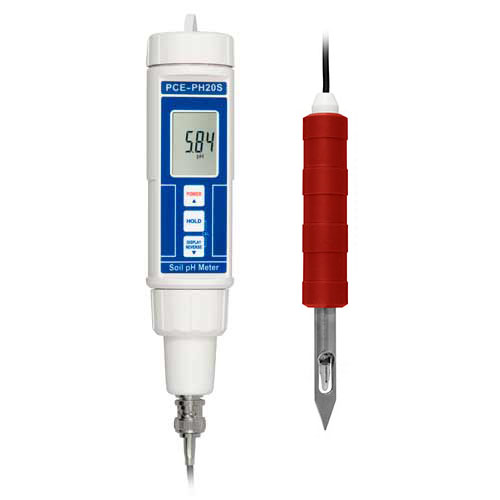


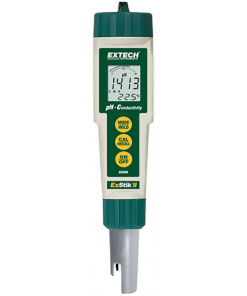

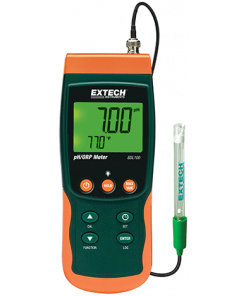

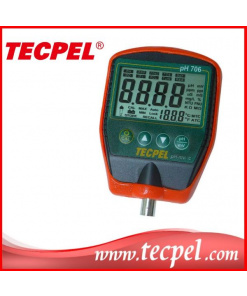

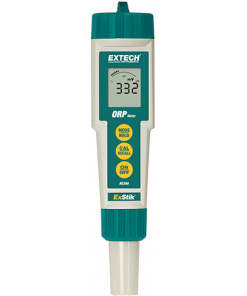

รีวิว
ยังไม่มีบทวิจารณ์